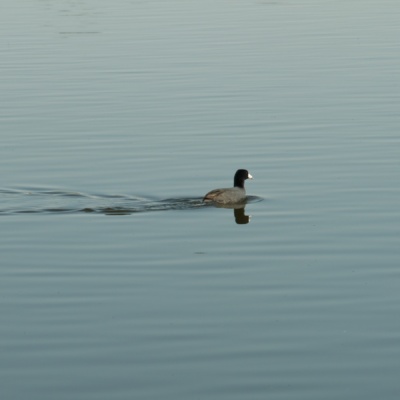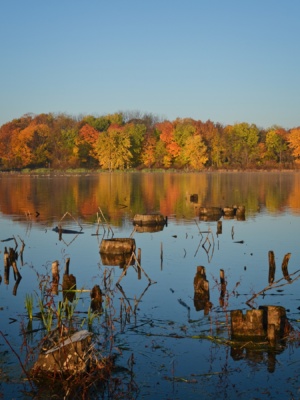I normally reserve this website as a place for backcountry adventures, i.e., trips that take place far from roads, parking lots, and civilization. However, with travel restrictions in place to slow the spread of the global pandemic, many of us are unable to reach those more exotic locations. Though the wild spaces near our homes may be less exciting to visit than the backcountry, they can still offer solace and a much-needed change of scenery from the indoors. One of my favorite local places to visit these past few months (past decade, really) has been the Celery Bog Nature Area.
In the late 1800’s, settlers in the Lafayette/West Lafayette area drained a large wetland so that they could farm the rich, peat soil. For much of the 20th century, these farms supplied vegetables, including celery, to grocers in the region. The farms were eventually abandoned in the 1960’s and the Celery Bog Nature Area was later established. This 195-acre gem in West Lafayette, Indiana includes prairie, savanna, woods, and a large marsh; paved and dirt trails wind through these various ecosystems, offering a brief escape into nature. Throughout the many years that I’ve lived in West Lafayette, I’ve visited Celery Bog hundreds of times, often with a camera; this post showcases my favorite shots of the nature area.
This area is the home of the Sioux, Miami, Potawatomi, Kaskaskia, Peoria, and Kickapoo peoples.
Wildlife
Celery Bog is the home of many different critters, from ducks, geese, and herons to squirrels, raccoons, and deer. You’ll often see people sporting binoculars or massive telephoto lenses wandering around the trails in search of the nearly 120 species of birds that live here. If you visit in the spring, you’re certain to spot trains of tiny goslings following their parents through the marsh, but be careful not to get too close; geese can be very aggressive when they’re protecting their young! I’ve been chased more than once by a protective goose…

Winter
Although the winters can be absolutely frigid in this part of the state, it’s a great season to visit Celery Bog if you want solitude. The transition from the brilliant fall foliage to a snow winter landscape is one of my favorite times to visit and photograph the woods. Wintertime also means unobstructed views through the trees and into the marsh, which makes it easier to spot wildlife.
Spring
When spring arrives, the wildflowers appear; not all at once, but gradually. The daffodils, bloodroot, and spring beauties are some of the first to appear from beneath the fallen leaves. Later in the season, the trilliums, phlox, and geraniums add color to the overwhelmingly green scenery. I like to visit throughout the season — this year, practically every day — to see all of the various flowers.
Summer
By late May or early June, most of the wildflowers are done blooming and the woods around celery bog are thick with ground cover and saplings. Gone are the unobstructed views you enjoy during the winter and spring, replaced instead by cool, green tunnels through the trees. The shaded woods can be a nice respite from the summer heat.

Autumn
Like most areas with deciduous trees, autumn is a beautiful, vibrant season at the Celery Bog Nature Area. Besides the amazing display of color, there’s that wonderful, earthy fallen-leaf smell. Most years, autumn is the most crowded time at visit Celery Bog, but if you arrive early in the morning you can have the place to yourself.
















































